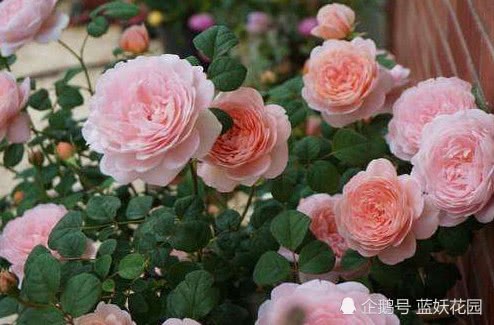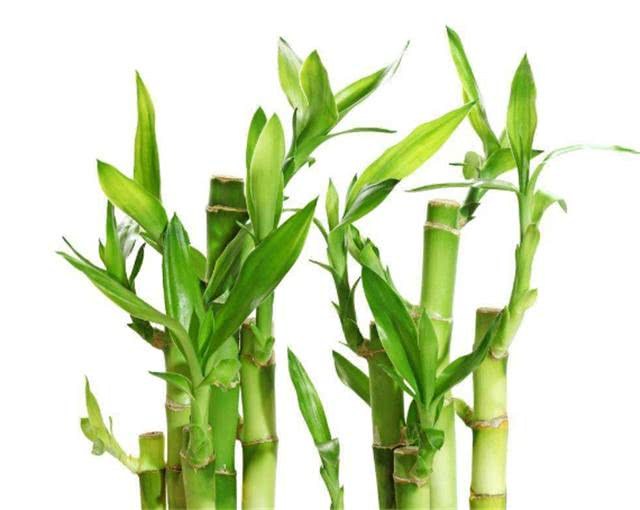Is the rose a medicine jar? Teach you 5 skills. Rose blossoms without worms.

Is the rose a medicine jar? Teach you 5 skills, rose blossoms without worms!
It is said that the rose is a medicine jar, you can see that the rose is all kinds of beauty, and can not resist the temptation, but really worried about rose disease worm, good entanglement! There is no need to struggle, the blue demon today teaches everyone to understand the common diseases and insect pests of the rose and the methods of prevention and control. After learning these, the rose can rest assured to raise boldly, and will no longer be afraid of diseases and insect pests!
First of all, the common diseases of rose, the understanding of the disease can be solved well, easy to deal with.
Rose disease
1. Black spot of rose
Black spot is the number one killer of rose, which can occur in spring, summer and autumn, and has a high incidence in summer. Many flower friends' roses become smooth after a summer, all caused by black spot.
Symptoms of black spot
Rose got black spot, at first the leaves appeared small brown spots, and then gradually expanded, turned into black-brown spots, and finally caused the whole leaf to yellowing and falling off.
Prevention and control measures
Black spot does great harm to rose, giving priority to prevention. Dysen zinc should be sprayed every half a month in spring. Especially in summer, more attention should be paid to medication prevention. Fungicides should be sprayed in time to prevent after being caught in the rain.
When black spot is found in rose, the diseased leaves should be removed in time, and then the whole plant and basin soil surface should be sprayed with benzen zinc + nitrilazole. You can also use mancozeb, carbendazim and other spraying, it is recommended that the two drugs are used together, the effect is better. It can be completely cured by spraying every 3-5 days and spraying continuously for 2-3 times.
2. Rose powdery mildew
Another killer disease of rose is powdery mildew. The rose with powdery mildew is not only ugly, because the leaves covered with a lot of white powder will seriously affect the photosynthesis of rose flowers. In serious cases, the white powder still wraps the buds alive, causing the buds to wither.
Symptoms of powdery mildew
The early stage of powdery mildew showed that the leaves infected with bacteria curled at the edge, and white powder could be found on the back of the leaves. If not treated in time, it would spread to the whole leaves, stems and buds, and a large area of powdery mildew appeared.
Control of powdery mildew
Powdery mildew is high in spring and autumn, and poor ventilation is the main cause of powdery mildew, so attention should be paid to keeping the environment ventilated and the interior of the plant well ventilated when raising rose.
When it is found that the leaves are infected with powdery mildew, the leaves should be removed in time and then sprayed with fungicides.
Powdery mildew is more difficult to control than black spot, and the spores of powdery mildew are not easy to be contaminated with drugs, so viscous agents should be added to increase drug adhesion when spraying fungicides. For example, you can add a little detergent or laundry water.
Diesen zinc + nitrilazole for the treatment of black spot can also be used to treat powdery mildew. Stone-sulfur mixture is recommended for outdoor rose, which is more effective in the treatment of powdery mildew.
Rose pest
Three common pests of rose: aphids, thrips, bees and red spiders
1. Aphids
Rose aphids are high in the spring and autumn season, aphids like to suck the juice of rose twigs most, and aphids reproduce very fast, so they must be dealt with in time when they are found.
The control of aphids is very simple, and a good effect can be achieved by spraying with aphid once.
2. Thrips
The harm of flower thrips in rose is very strong, which can cause deformity and distortion of rose leaves and seriously affect the normal growth of rose.
Flower thrips begin to breed in spring and can be said to be rampant in summer, so prevention must start in spring.
The prevention and control of flower thrips is very simple, and spraying with imidacloprid in the evening can have a very good therapeutic effect. It is recommended to use imidacloprid once every half a month in spring, brown texture of new leaves of rose is found in summer, and imidacloprid should be sprayed in time when deformed.
3. Stem wasp, leaf peak, leaf cutting wasp
For the rose flower friends, the three big bees of the rose can be said to be abhorrent.
Stem wasp
In spring, it is often found that long and good bamboo shoots suddenly drop their heads. Oh, it is too cruel. Seeing the standard super beautiful rose flowers abort like this, that is called heartache!
This phenomenon is that stem bees dry, stem bees lay eggs in the twigs of the rose, and after hatching the larvae will gnaw on the inner stems, causing the branches to lose water and wither.
In this case, we can only talk about cutting off the branches.
Ye Feng
Compared with stem wasp, the harm of rose leaf wasp is not so direct, but the harm of leaf peak is mainly the leaves of rose.
The leaf wasps of the rose will first lay eggs on the branches of the rose, and after the eggs hatch, the larvae will eat the leaves of the rose frantically.
That scale, that speed is simply sweeping, so be sure to pay attention to regularly inspect your rose flowers in summer, and find that there are fewer leaves, and you will probably find a team of leaf wasp larvae.
The treatment of leaf wasp larvae is very simple. They can be killed directly by hand, or they can be sprayed with aerosol insecticides. The leaf wasp larvae are very organized and disciplined, and they basically do not run around, but they all concentrate on their actions. So I found that one can basically find a nest on the same branch. Hey, it's all tears!
Leaf-cutting wasp
Leaf-cutting wasp ah, I really don't know what to say, this product is a thief! Thief!
The leaf-cutting wasp does not eat twigs or leaves, but it specializes in stealing rose leaves, and each of them is specially trained to cut rose leaves. That guy, cutting rose leaves is quite artistic.
Many flower friends will cut leaf bees as soon as they come to the summer and autumn season. Hey, it's indescribable. Let's take a look at the picture.
For the management of leaf-cutting bees is more troublesome, the drug has little effect, if you can move the rose to other places, so that leaf-cutting bees can not find it is also a good way.
For the treatment of the three rose bees, most of the time depends on luck, the effect of drug treatment is really very general, spraying some drugs with a strong smell will have a little effect, but people can't stand it.
Most of the time, it depends on people to find out in time, kill these bees, or pull the net to prevent and cure them.
4. Red spider
Red spider is a common disease of rose. Red spider mainly absorbs the juice of rose leaves, which causes rose leaves to lose green and yellowing, affecting photosynthesis. Red spiders reproduce very fast and do great harm to rose.
Red spiders mainly occur in a poorly ventilated environment. When it is found that rose leaves have pinholes, large pinholes and uneven color spots, you should pay attention to check the back of the leaves to see if there are red, black or white spots on the back of the leaves. Then the red spider is right.
The red spider is more afraid of water. After getting the red spider, it can be scrubbed with water or washed with a water gun.
It is best to use drug treatment, drugs have to use acaricidal drugs, such as dacarine, Aika mites and so on, the general insecticides have a weak effect on red spiders.
Do you have these diseases in your rose? If you have any tips for governance, please leave a message below.
(the text of this article is original, and the pictures are all from the Internet. If there is any infringement, please contact me to delete it.)
To see more knowledge of growing flowers and vegetables, please follow the Blue Devil Wechat official account: blue Devil Garden (ilanyao)
- Prev

These three kinds of flowers can attract money, and more and more people in prosperous families are raising them.
In modern society, every household has several pots of flowers, which can add fun to life, and the meaning of flowers is also more beautiful. Flower friends like a lot of flowers, but these four kinds of flowers must be raised, and raising them can be very auspicious. ...
- Next

Orchids do not love long leaves love flowering how to do?
Orchids usually grow leaves (seedlings) first and then bloom. Netizens say they don't love long leaves, but love flowers. What's the reason? There are usually two reasons for this: sunlight and fertilizer. Let's talk about sunshine first. As the saying goes: Yang is easy to spend, Yin is long...
Related
- Wuhan Hospital Iron Tree Blooming Result Was Instantly Frightened by the Gardener Master
- Which variety of camellia is the most fragrant and best? Which one do you like best?
- What is the small blue coat, the breeding methods and matters needing attention of the succulent plant
- Dormancy time and maintenance management of succulent plants during dormancy
- Minas succulent how to raise, Minas succulent plant pictures
- What are the varieties of winter succulent plants
- How to raise succulent plants in twelve rolls? let's take a look at some experience of breeding twelve rolls.
- Attention should be paid to water control for succulent plants during dormant period (winter and summer)
- Watering experience of twelve rolls of succulent plants
- Techniques for fertilizing succulent plants. An article will let you know how to fertilize succulent plants.

